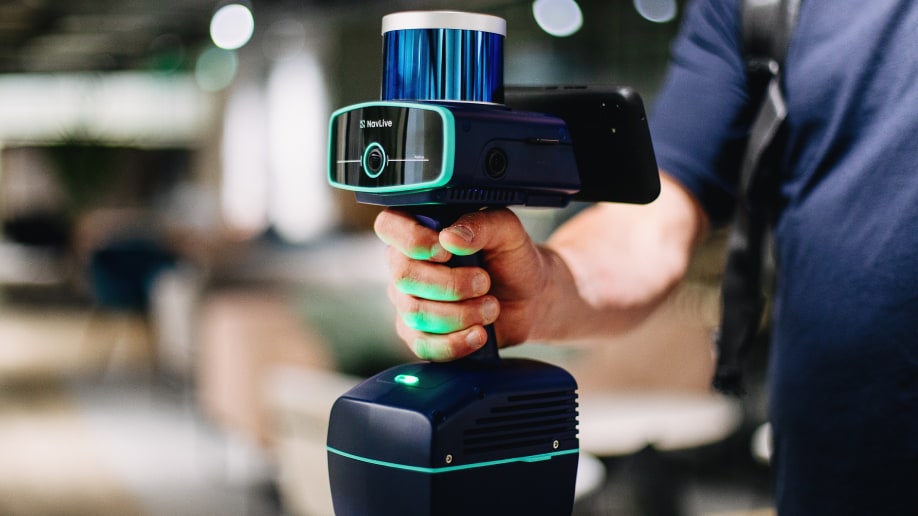Inside NavLive’s AI-Powered Construction Scanner: Why We Chose NVIDIA
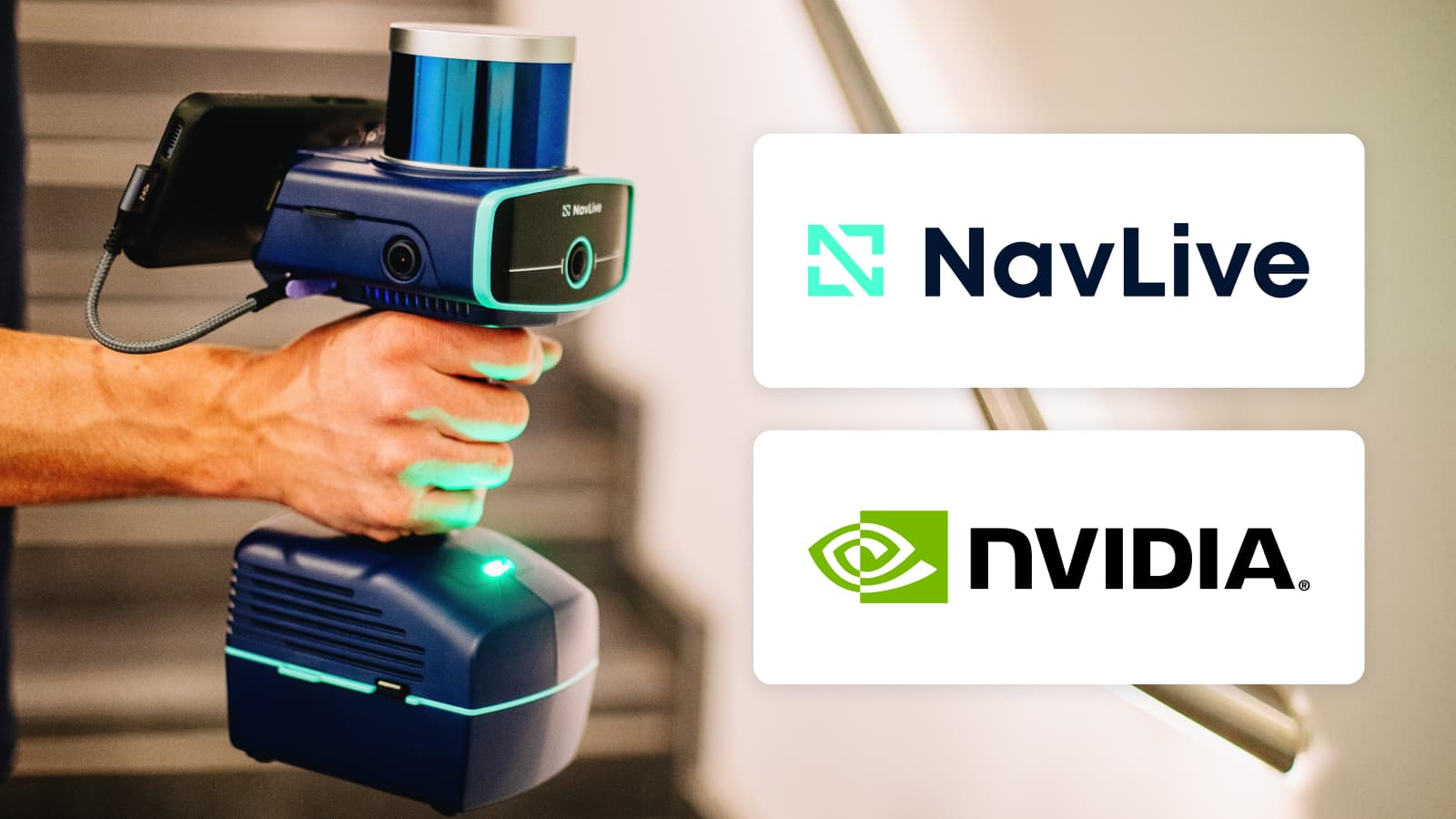
At NavLive, we build AI-powered scanners designed to capture construction sites in precise detail. Our devices bring together multiple sensors, real-time processing, and advanced computer vision models, all inside a compact handheld unit.
Achieving that balance between performance, portability, and reliability has required careful choices about what powers the scanner under the hood.
One of the most important decisions was the computing platform. After testing and evaluating different options, we selected the NVIDIA Jetson Orin™ NX 16GB module as the core of our latest-generation scanner.
Here’s how we arrived at that choice, and how the Jetson enables the capabilities our customers rely on.
The Challenge: Multiple Sensors, One Lightweight Device
Our construction scanner combines five sensors: three cameras, one LiDAR, and one IMU. All five stream large amounts of data simultaneously.
Typical edge compute modules provide only a small number of interfaces. In practice, this meant the NavLive scanner would have required custom boards and a separate microcontroller to manage low-level hardware control, adding complexity and making tight integration harder to achieve.
The new design called for everything to be consolidated into a single system. At the same time, the scanner had to remain lightweight enough to hold comfortably for long sessions on site. The battery integrated into the device was a big contributor to the overall weight, so having a power efficient compute module which therefore allowed us to use lighter lower capacity batteries without compromising runtime, was also very desirable.
Early prototypes were functional but heavy. Testers consistently told us the device became tiring to use after only a few minutes.
Why Jetson Orin NX
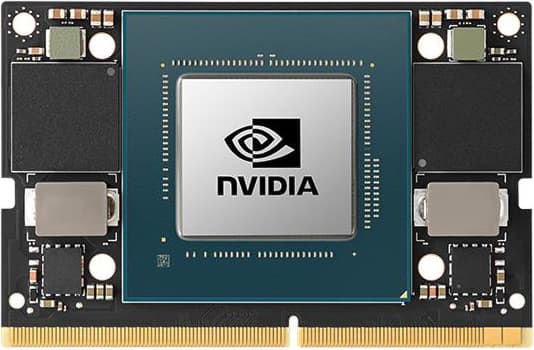
The Jetson Orin NX 16GB offered a set of features that aligned well with these requirements:
- Compact system-on-module: Combines CPU, GPU, memory, and dedicated deep learning accelerators in a small form factor.
- Efficient power use: Lower power consumption means we can use a lighter battery, reducing total device weight.
- Multiple high-bandwidth interfaces: Supports integration of multiple cameras and sensors through MIPI CSI-2, GPIO, I2C, SPI, and other interfaces.
- Shared CPU-GPU memory: Enables efficient data transfer between CPU and GPU processes, which is critical when dealing with high volumes of real-time sensor data.
Compared with the larger NVIDIA Jetson AGX Orin (which we also tested), the Jetson Orin NX struck the right balance. The Jetson AGX had more raw power, but the Jetson NX was better suited for a handheld scanner due to its size and energy profile.
Hardware Integration with Connect Tech
To meet our requirement of three cameras, we worked with Connect Tech Inc. and adopted their Boson carrier board for FRAMOS.
Most off-the-shelf solutions only allowed for two cameras. The Boson board supports up to four, along with easy access to serial interfaces.
This allowed us to build a scanner that integrates all three cameras, the LiDAR, and the IMU within one compact unit, while leaving room for expansion if needed.
Real-Time AI at the Edge
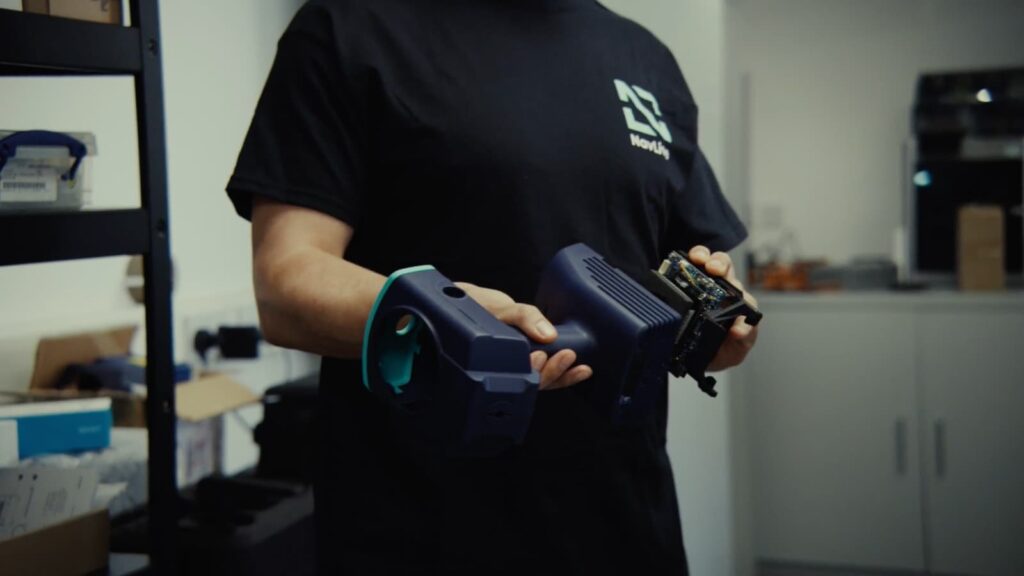
One of NVIDIA Jetson’s defining features is its ability to handle both traditional compute tasks and deep learning inference directly on the device. This makes it possible for us to process data entirely on the scanner, without sending anything to the cloud.
- SLAM in real time: Our SLAM system combines LiDAR, IMU, and camera data on the fly.
- Object detection: Current models identify features like windows and doors.
- Future scaling: Dedicated deep learning accelerators (DLAs) on the Jetson Orin NX support advanced use cases such as automatic face detection and anonymisation, which will help with compliance on site.
The Jetson Orin NX 16GB includes two DLAs, enabling faster inference times. Making full use of these accelerators required significant engineering effort, but the performance gains and lower power draw were worth the investment.
Leveraging NVIDIA Software Tools
Beyond hardware, NVIDIA provides a suite of software resources that have been important in our development process:
- Linux for Tegra (L4T): A Linux-based OS tuned to Jetson hardware, similar to Ubuntu but more tightly integrated, which made the transition quick for our engineers.
- ROS compatibility: Easier integration into robotics workflows.
- Vision Programming Interface (VPI): Accelerates image processing and computer vision, with abstractions for hardware blocks such as the VIC and PVA.
- Multimedia API (libargus): Provides low-level access with zero-copy synchronisation, ensuring that data from multiple cameras and sensors is timestamped within microseconds.
These tools gave our team the flexibility to optimise the scanner without reinventing basic building blocks. For example, our custom camera driver was developed on top of NVIDIA’s libargus and VPI APIs which allowed us to write production-level code in a fraction of the time.
Development Experience
Our transition to Jetson took only a few months.
Since L4T is Ubuntu-based, our engineers were able to get up to speed quickly. Detailed hardware documentation from NVIDIA also made it straightforward to design a custom implementation tailored to our scanner.
Most of the heavy lifting was done by two of our full-time engineers, with contributions from the wider NavLive technical team.
The combination of Jetson’s ecosystem and our in-house expertise allowed us to bring a fully functioning device to market without the complexity we faced in earlier designs.
The Result
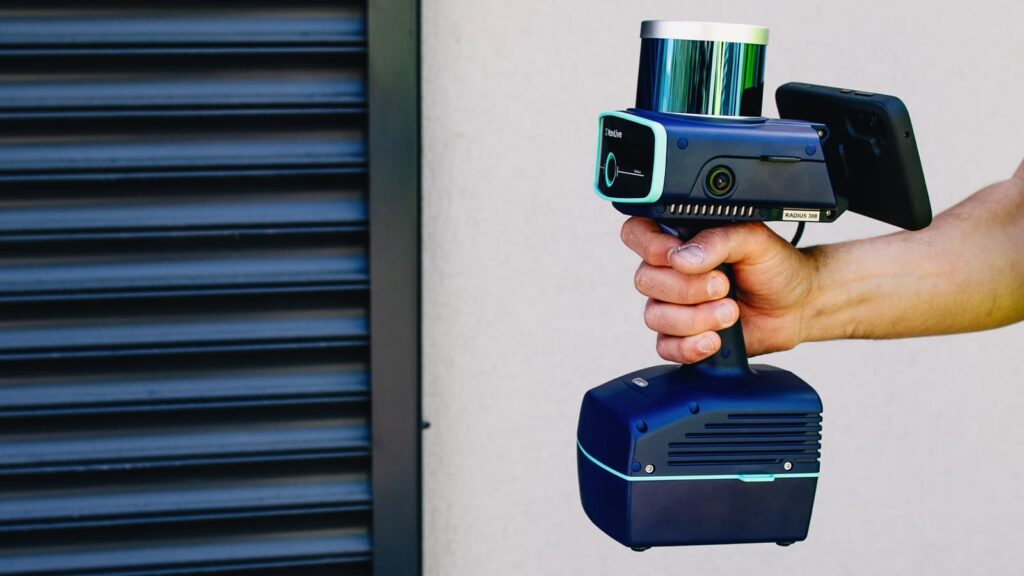
Thanks to Jetson Orin NX, the NavLive scanner now delivers:
- Lightweight form factor suitable for handheld use.
- One-hour runtime with all sensors active.
- Integrated processing of SLAM and object detection in real time.
- On-device data handling with no reliance on external servers.
When customers pick up the new scanner, they immediately notice the difference. Where the first generation felt heavy after a few minutes, the current version feels much lighter, yet it is significantly more powerful under the hood.
Looking Ahead
By building on Jetson, we have a platform that not only meets today’s needs but also leaves room for growth.
Additional AI models, new sensor integrations, and advanced computer vision features are all possible within the same hardware framework.
For NavLive, NVIDIA Jetson Orin NX has been the right choice: compact, efficient, and capable of handling the demands of real-world construction environments.
